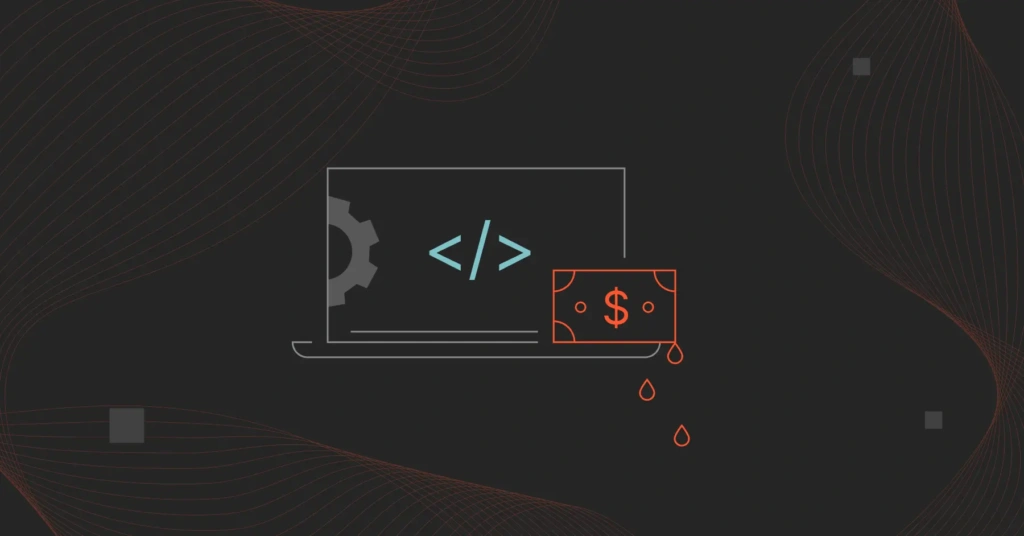You’re a responsible SaaS company leader, so you understand the importance of tracking your cloud costs in detail. Perhaps you’ve even begun working with us at CloudZero, and you’re starting to see data and insights hit your dashboard.
If so, you may have noticed — because this happens to all of us in the SaaS world at some point — that some customers cost your business far more than others.
Suppose you’re also tracking your revenue per customer. In that case, you might have identified one or a handful of customers or segments whose costs currently match or outweigh the benefits they’re bringing to your company.
So now you’re left wondering: What can you do about this problem? What’s the best way to bring your customer costs and revenue back into alignment so your business can operate in the green and stop bleeding money unnecessarily?
Here are the techniques our experts at CloudZero recommend.
What To Do When SaaS Customers Cost Too Much
Dive deeply into your unit economics
Before making any significant changes, it’s crucial to make sure you thoroughly understand where each customer’s costs are coming from and why. You’ll want to break down your data into the smallest units possible to see how each puzzle piece fits together.
The categories you choose to track may vary, but you can use this list as a starting point:
- Identify your costs per customer segment. Try several approaches here, including looking at costs per customer in specific geographic regions, by small business or enterprise, or even by industry.
- Track your costs for individual customers you serve, assuming your number of customers is in the tens of thousands, thousands, or less.
- Compare your costs to your revenue for each customer and segment to determine which has healthy margins versus which could be adjusted.
- Find out where unexpected costs are coming from. How much does each customer cost your business for API usage, data usage, storage, etc.? Are they using particular products or features that are driving those high costs?
- Compare customer against customer and segment against segment to find the outliers that most urgently need your attention.
Once you deeply understand your customer costs, you’ll have a better idea if you need to take action in any (or all) of the following areas.
Balance your packaging and pricing tiers
SaaS companies typically build their initial pricing tiers based on the easiest services to sell. Advanced customers can buy into the more complex packages, but lower tiers tend to be geared toward making quick sales to customers who want to get started immediately.
These pricing decisions are often made before a new product or feature even launches. That timing can make it difficult to know with certainty what your margins for different packages will be a priori.
It also means re-evaluating your unoptimized packaging and pricing strategies is a great place to start if you want to make sweeping cost improvements immediately.
- Identify which products and features are easiest to monetize, and use these to incentivize your customers to choose the package that matches their needs.
- Try to balance each tier so that margins don’t differ wildly between packages or tiers.
- If that isn’t possible, use your cost data to balance your numbers in other ways. For example, if every sale of your high-end service generates ten times the revenue of your low-end services, ensure that your low tiers sell frequently enough to be worthwhile and your high tiers are attractive enough to encourage as many sales as possible.
The end goal is to structure your tiers to bring maximum value to the customer while keeping your margins healthy no matter which choice the customer makes.
Customize your management of certain customer segments
Let’s say the heavy users who are draining your resources are primarily your largest enterprise customers. Perhaps it’s time to start managing these customers differently from the rest of your small to medium-sized business customers.
You could:
- Steer your power users toward a particular pricing tier that helps you recover your costs;
- Redesign some of the technology these customers are using to make it more efficient or;
- Move these customers to another section of your infrastructure entirely, which would allow you to customize their usage and pricing in a mutually beneficial way
Note that you can use these techniques for almost any customer segment — it doesn’t have to be enterprise customers. If small businesses in the greater Chicago area are eating through your profits, for example, feel free to make special exceptions for customers within this demographic.
Optimize your terms for every renewal
Knowing your customer costs in detail is like having a superpower when it’s time to handle contract renewals.
Often, when you land a new customer, you’re making your best guess as to how much they will cost and how much revenue you will gain from their business. However, as with your initial pricing and packaging choices, these estimates can be fairly far off.
If you know exactly what a customer costs your business — and how much revenue they bring to the table — you’ll be in an incredibly strong position to negotiate for a better deal next time.
You’ll know exactly where the lines are that you cannot cross, and you’ll be able to calculate ahead of time how a compromise here or there would affect your margins for that individual customer.
In other words, you can eliminate the guesswork and know for sure that every renewal you make is a step toward healthier profits.
This can come in handy in scenarios where, for example, a rival business threatens to take away a valuable customer. You can tailor a discount to that specific customer that encourages them to stay with your business without risking losing money by making the discount too steep.
On the flip side, you can guide your revenue teams about where the hard renewal conversations should be had. If you have a customer that you are losing money on or with a razor-thin margin, knowing that ahead of a renewal will equip your renewal team with the data necessary to draw lines where it matters to your business.
On The Other Hand… Here’s What To Do If You’re Not Sure How Much Your Customers Cost
All of the above assumes that you already have some sort of advanced cost-tracking method in place within your business.
However, it’s also completely possible that you’re looking for solutions because you just have a feeling that your customer costs are disproportionate or you’re generally concerned about the health of your margins.
If that’s the case, you won’t have the granular unit cost data you’ll need to tweak your pricing and packaging tiers. You also won’t be able to carry out those straightforward conversations about cost with your customers or build your infrastructure more efficiently.
This means your first step, before you can begin fixing anything, is to start tracking your SaaS costs in detail.
CloudZero can help you begin allocating and breaking down your costs almost immediately, so even if you’re new to the process, it shouldn’t take too long to get you up to speed.
Once your costs are allocated, you can take all of the cost-saving measures detailed in the above sections. Better still, you can do it under the guidance of our FinOps Account Management team, who will be working closely with you to guarantee your success.
 to see the difference that comprehensive cloud cost tracking can make.
to see the difference that comprehensive cloud cost tracking can make.








